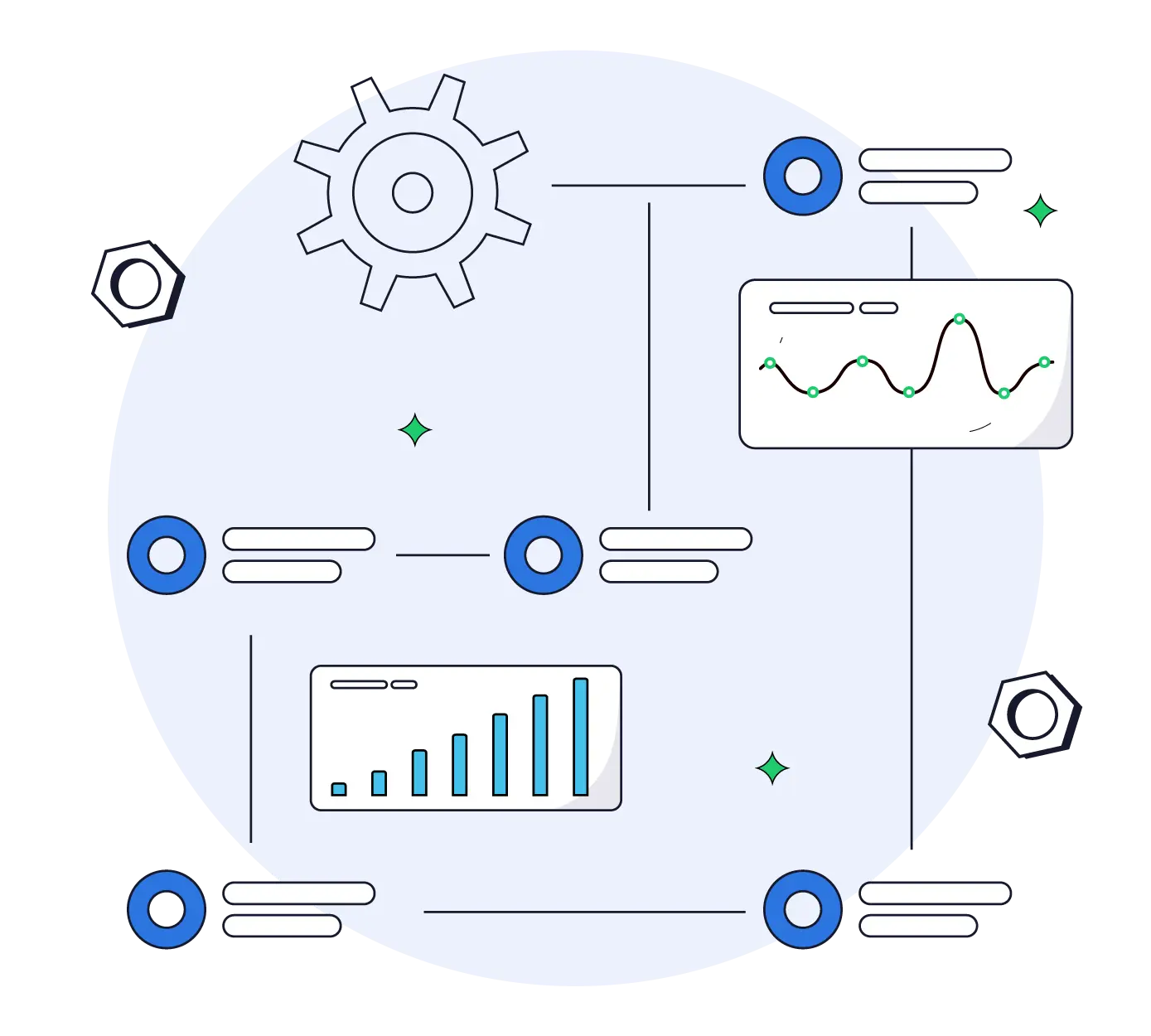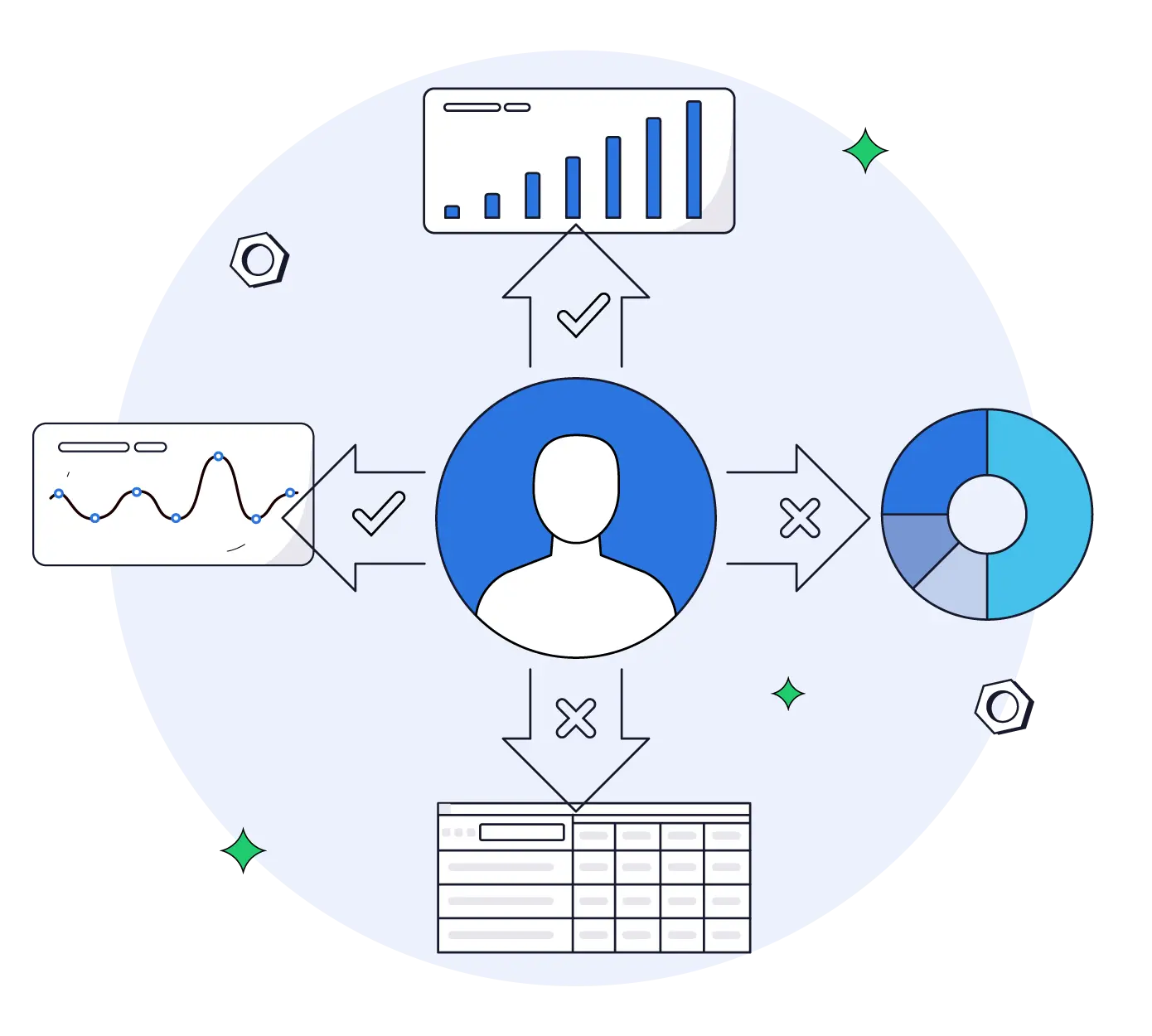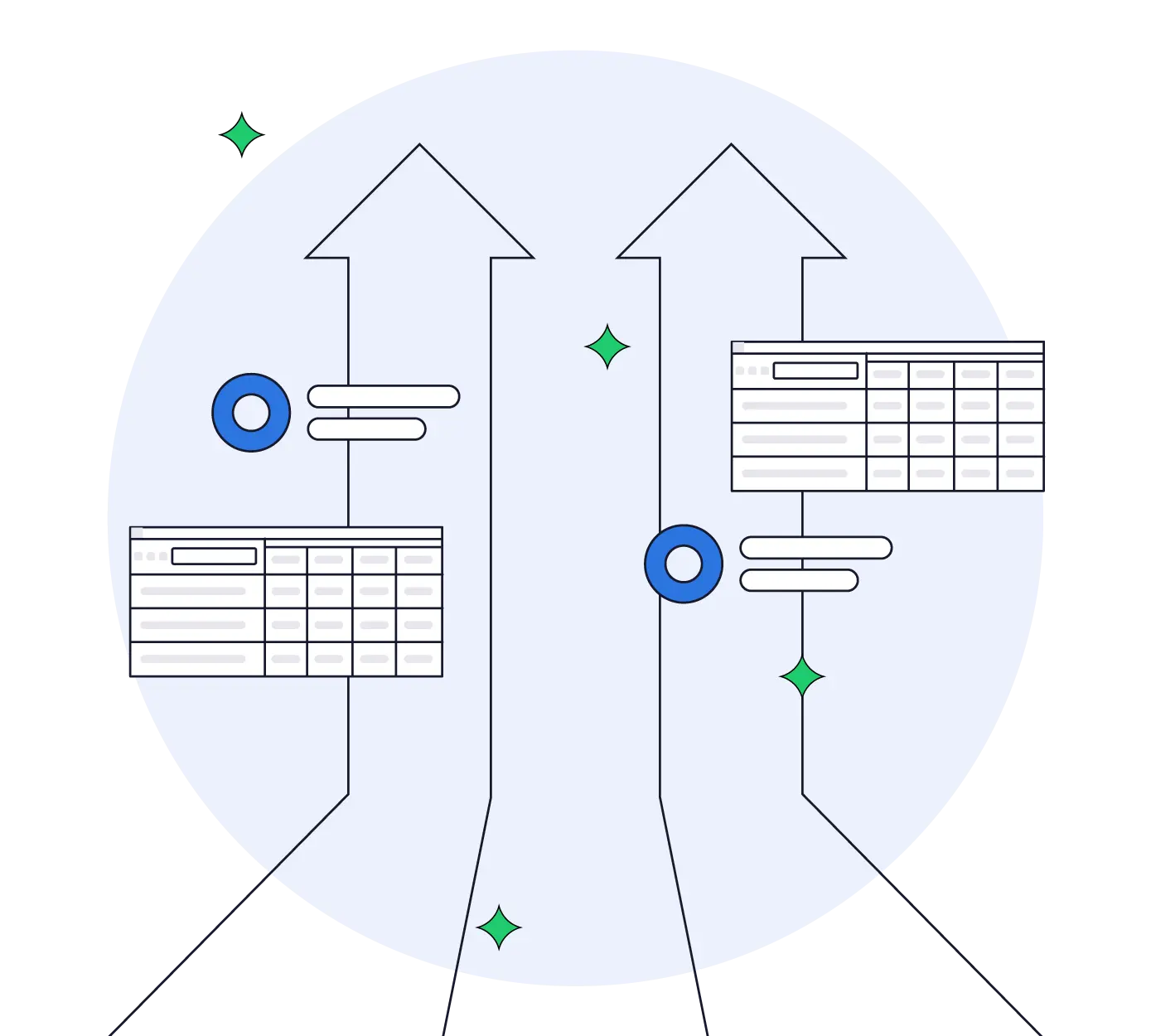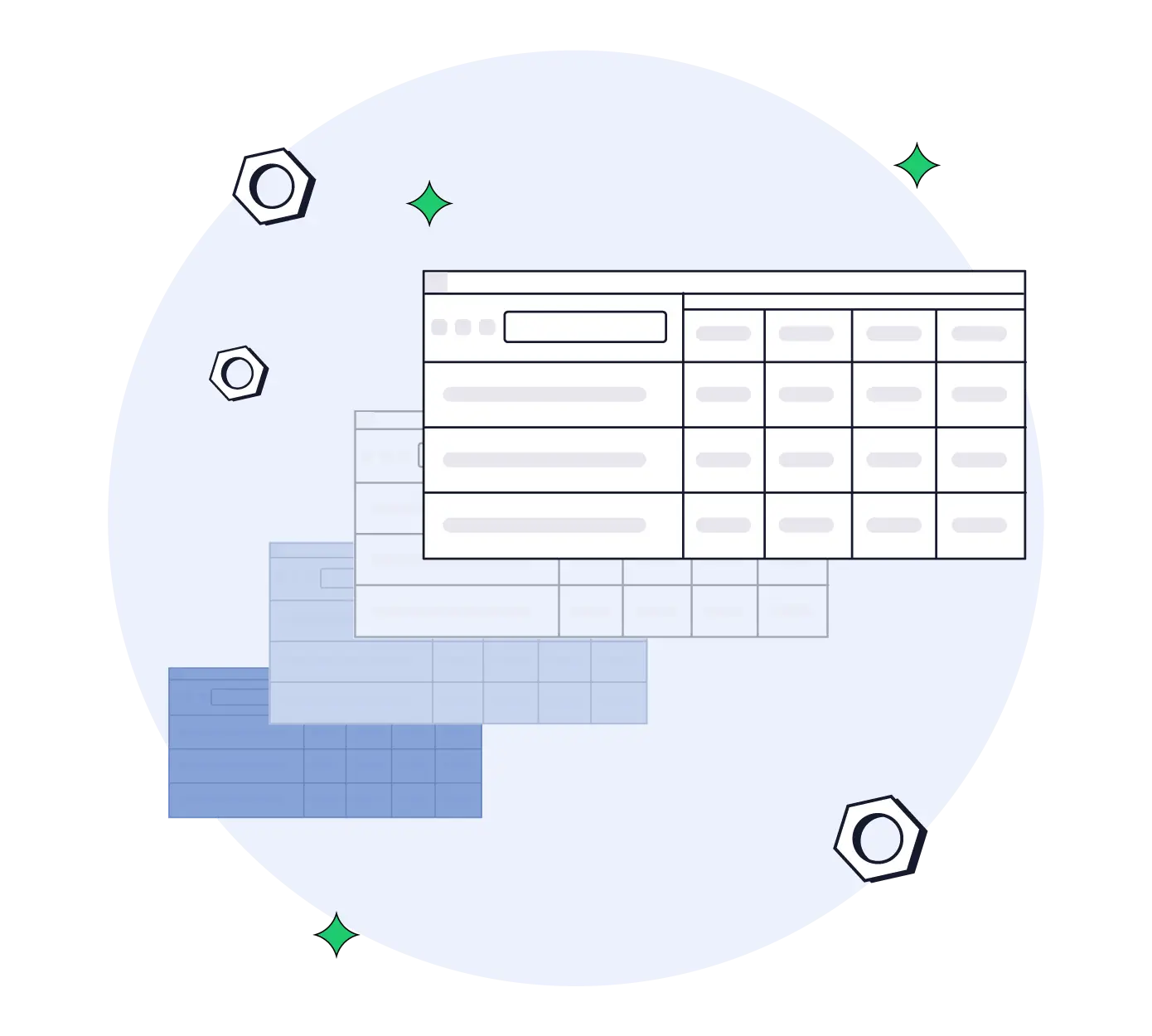Bilander Sheets
Use this module to configure your flexible, consistent, and structured spreadsheets.
A Flexible Tool for Collecting, Planning, and Processing Data
Bilander Sheets is our module designed to simplify the work of every department by allowing you to model any business area. It streamlines processes such as data collection, planning, budgeting, and forecasting.
You can create sheets for any purpose and share them with selected user groups. Through integration capabilities and a business rules layer, you can establish an automated data collection and processing workflow.
The consistent and central structure eliminates the chaos associated with files scattered across different departments and employees, while flexible views allow you to create any layout for data entry and analysis.
Say goodbye to problems arising from inconsistencies or lack of access to key information.
Flexible Structure
A central data structure, consistent across the entire organization, provides a unified view of data, facilitating decision-making at every level of management. This eliminates problems resulting from data dispersion and inconsistency, increasing operational efficiency and improving communication between departments.


Precise Access Control
Multi-level permissions for sheets and data ranges ensure controlled access to information, protecting sensitive data from unauthorized access. This means each employee has access only to the data necessary for their work, enhancing security and helping maintain data integrity within the organization.
Parallel Work
Parallel work allows teams to simultaneously enter and analyze data, significantly accelerating business processes and increasing company efficiency. This enables ongoing collaboration and prompt reaction to changes, eliminating delays caused by the need for sequential information transfer.


Sheet Versioning
Sheet versioning allows you to track changes and restore previous versions, minimizing the risk of data loss and making it easier to correct errors. This enables teams to work more effectively, confident that they can always revert to previous versions of sheets if needed.
Are you aware of the limitations of traditional spreadsheets?
Good, because you know how much you stand to gain. Our tool eliminates the known limitations of traditional spreadsheets and introduces uniform data structures across the entire organization that don’t require manual merging.
Lack of Data Consistency. Scattered files often differ in format and structure, leading to inconsistencies and complicating analysis.
High Risk of Errors. Manual data entry and merging from multiple sheets increase the risk of errors, such as typos, formula errors, or data discrepancies.
Difficulty in Consolidation. Merging data from multiple files is time-consuming and complex, especially with large and complex datasets.
Lack of Version Control. In a distributed environment, it’s difficult to track changes and manage different sheet versions, which can lead to confusion and loss of important information.
Security Issues. Scattered files are harder to secure, and the lack of a central access control system increases the risk of unauthorized data access and modification.
Limited Collaboration. Sharing and working simultaneously on the same file can lead to conflicts and data loss, hindering effective teamwork.
Low Scalability. Traditional sheets are not designed to handle very large datasets or complex analyses, limiting their usefulness in more advanced business applications.
Explore More Features

Views and Data Layouts
With the ability to create different layouts and pivot data with a defined structure, you can quickly analyze and interpret data from various perspectives. Additionally, you can enter data directly into the pivot, allowing for personalized and convenient layouts for data editing and analysis.

Formulas and Business Logic
Using standard formulas, users can create data flows between sheets and process them into target structures. Furthermore, advanced users can connect data from other sources and IT systems, eliminating the need for manual information merging.

Automation and Integrations with Other Systems
Automating and integrating data from multiple sources leads to significant time savings by eliminating manual data collection and consolidation processes. You gain a consistent and up-to-date picture of the situation, allowing you to monitor deviations from planned targets.

Changes History
Data change history and audit enable tracking modifications made in the system, increasing transparency and helping to identify the source of potential errors. This makes it easier for you to control and ensure high data quality.
Read more

Let’s talk!
We’re looking forward to hearing from you and will be happy to answer your questions. We will determine how we can make your work easier and help you achieve your organization’s goals.
- How you can utilize our spreadsheets
- Which areas in your company you can improve
- What you gain by implementing sheets and other system modules
- The benefits of using our sheets and their advantage over traditional tools
